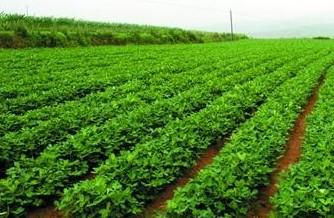
Crop rotation
According to the investigation, the population density of grubs decreased by 85.8% and the yield per mu increased by 50-75kg, which also reduced the occurrence of wilt. Planting rice stubble peanut can not only ensure the need of irrigation and drainage, but also control the damage of grub, reduce the use of drugs and improve the quality of peanut. In addition, when it is necessary to continue cropping, measures such as deep ploughing and increasing application of organic fertilizer should be taken.
Spread mulched peanut
The vegetable peanut and plastic film spring peanut planted with double film can stagger the damage time of grub larvae and adults, reduce the use of drugs and improve the quality of peanut.
Application of biological fertilizer
On the basis of increasing organic fertilizer and soil fertility, the application of 20 kg bio compound fertilizer and 20 kg ternary compound fertilizer per mu can promote the early development of peanut, increase the number of flowering and root nodule per plant, improve the disease resistance and benefit the high yield of peanut.
Use of biological agents
When planting, 1 kg of Beauveria bassiana (BBR) per acre can be used to prevent underground pests. The powder of Bacillus thuringiensis (No. 8 bacteria) can be applied during the sowing period and the spawning period of the pupae. It has the effect of protecting fruits; using BE-82 to kill aphids or matrine to control seedling aphids, and using agricultural resistance 120 to control peanut diseases, a satisfactory control effect can be obtained.
Timely irrigation
In the case of drought 4 to 6 weeks before harvest, peanuts are susceptible to contamination by aflatoxin. Watering at this time can reduce its pollution.
Careful use of hydrazide
Butyryl hydrazide, also known as B9, has carcinogenic effect on the "asymmetric dimethylhydrazine" produced by its hydrolysis, which has become another sensitive item in peanut export after aflatoxin test. In order to avoid the production of butyryl hydrazide residue, we can use Paclobutrazol instead of B9 for chemical control.
Safe storage
After harvest, peanuts should be dried in time. When they are put into storage, the moisture content of pods should be controlled below 8%, and the storage temperature should be 20 ℃ and the relative humidity should be 52%, which can slow down the rancidity of peanuts and effectively reduce the pollution of aflatoxin.
Source: Yunnan Science and Technology News
转发0评论57